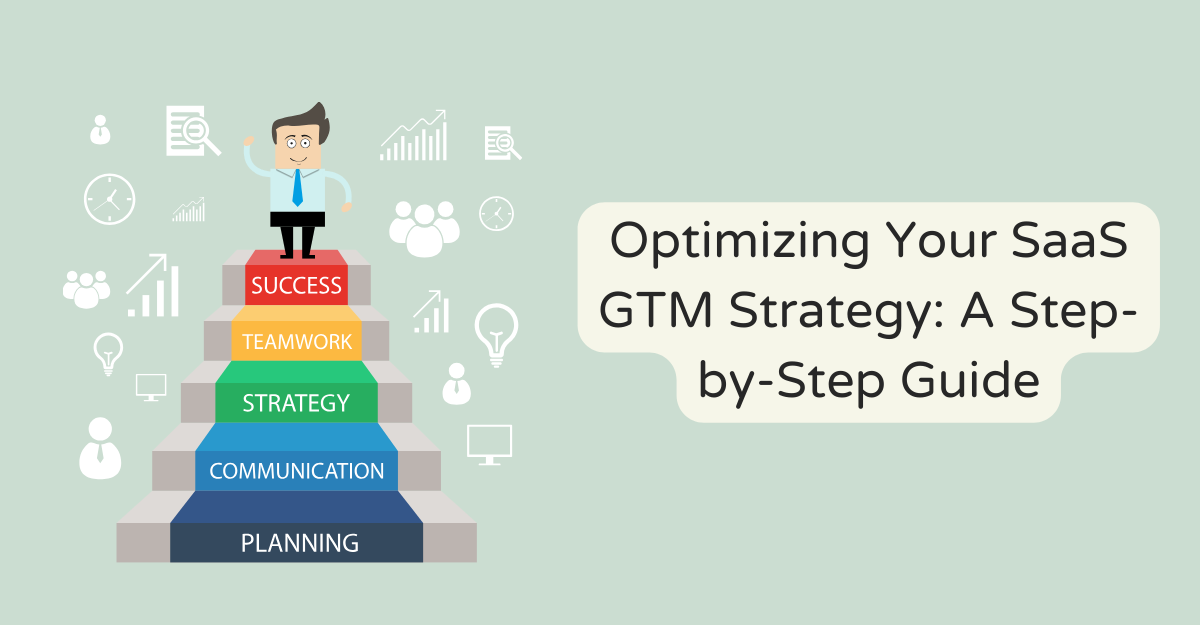
Optimizing Your SaaS GTM Strategy: A Step-by-Step Guide
In the SaaS galaxy, where even gravity seems to favor Wit and Innovations, every seeker of the stars—i.e., your customers—needs a reliable map and a sturdy rocket to get there.
In other words, crafting a solid Go-To-Market (GTM) strategy for your Software as a Service (SaaS) is akin to planning a celestial odyssey, in the digital age, at warp speed.
This blog post is your cosmic guide, complete with warp factors and wormholes, to steer your SaaS ship toward successful GTM optimization, ready to explore the frontiers of your product’s potential.
Unveiling the SaaS Constellations
Before we chart our course, it’s crucial to look up and survey the SaaS universe.
The SaaS landscape is shaped by the most dynamic forces in business today, including the cloud, data analytics, and the internet, which act as gravitational influencers on your trajectory.
But don’t get too starry-eyed; amidst these luminaries, you need to identify your unique value proposition, understand your audience, and carve out your market universe.
Think less “constellations” and more “Starship Enterprise” when considering how your SaaS will boldly go.
Launch Preparation: Market Research and Analysis
The market research phase of your SaaS GTM strategy is like preparing your rocket’s navigation systems; it will be the difference between a smooth countdown and a mid-air core meltdown.
Here, research is your best friend. You need to:
- Identify the ‘why’ behind customer needs and pain points.
- Delve into competitor strategies to spot their blind spots and opportunities for your SaaS.
- Understand trends not just in technology, but in user behavior and expectations.
- Establish your unique selling proposition (USP), which is the warp drive for your GTM strategy.
Analyzing the market is much like launching a probe into the depths of space—you don’t know what you’ll find until you get there, but having strong directional insights is what gets you noticed.
Building Your Star Cruiser: Product and Pricing Strategy
Your SaaS product is the star cruiser, with each component being crucial to a successful voyage. Consider:
- The design and usability of your user interface (UI) and user experience (UX) as the ship’s cockpit.
- The flex and features your SaaS provides must be flexible enough for your crew, i.e., customers, to chart their own courses.
- Establishing a pricing model that is not only attractive but also easily navigable—complex pricing structures are the asteroid fields of SaaS GTM.
- The propulsion systems power your product, including customer support, onboarding processes, and update rollouts, which all contribute to the perception of your product’s speed and agility.
Checking the Warp Coils: Distribution and Sales Strategy
How your SaaS reaches customers is critical. Your distribution and sales strategies are composed of self-evident, yet powerful principles:
- Explore partnerships with channel resellers, integrators, and platform ecosystems.
- The interplay between outbound and inbound marketing activities, considering the marketing mix is akin to balancing your ship’s thrusters.
- Direct sales efforts must be attuned to the buying cycles and habits of your target market—no sense in trying to sell lawnmowers on Mars.
Monitor and Adjust Trajectory: Feedback Loops and Continuous Improvement
Your GTM strategy is a continuous loop of iterations, updates, and enhancements. It’s like the onboard AI constantly monitoring system health and making adjustments to keep you on course.
- Set up feedback mechanisms to catch signals from the outer rims of your market universe.
- Be nimble and ready to pivot if data shows a significant drift from your desired path.
- Regularly revisit each component of your GTM strategy to make small, frequent adjustments rather than one massive, risky change.
After a successful GTM strategy, it’s time to look back at the new stars in your market universe. Your customer base will be the constellation that guides your return, as long as you continue to offer them value, insights, and upgrades to keep them aboard your ship.





